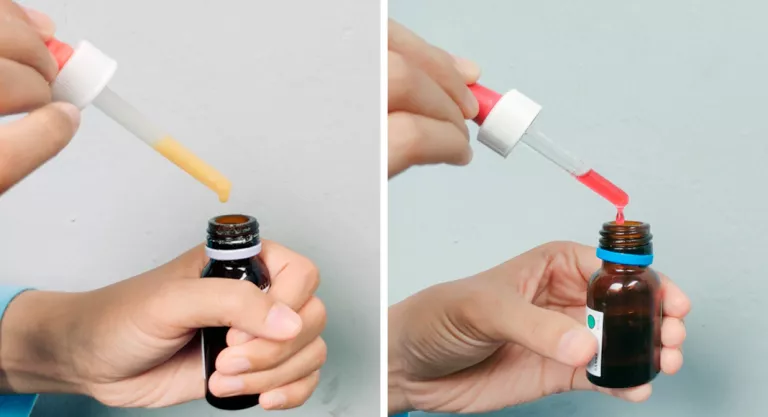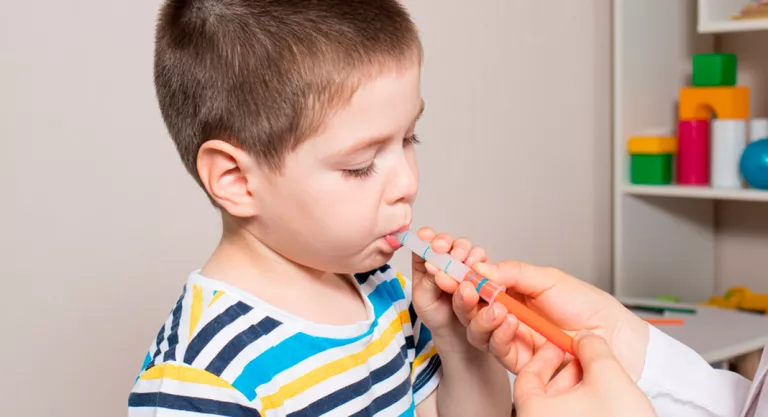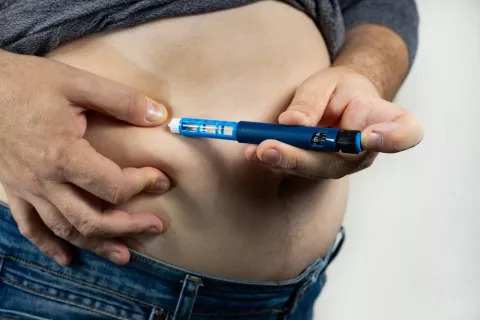In the day-to-day of raising our children, paracetamol and ibuprofen are common companions to turn to when children suffer from some discomfort, and for this reason they are not usually missing in any medicine cabinet, but how are they different? do we know how to use them correctly? Well, despite the fact that we believe that we know them well and that we are careful with their use, sometimes we carry out certain practices that are not the most appropriate and that can even be dangerous for minors.
Table of Contents
- Paracetamol and ibuprofen: how are they different?
- Administration guidelines for paracetamol and ibuprofen in children
- And what happens if children vomit after taking a shot?
- How to avoid mistakes when administering ibuprofen or paracetamol to children
1 . Paracetamol and ibuprofen: how are they different?
According to Pediamecum, the documentary database of active ingredients commonly used in pediatrics, created by the Medicines Committee of the Spanish Association of Pediatrics (AEP), paracetamol is an analgesic and antipyretic that blocks the generation of pain impulses peripheral level and acts as a temperature regulator. In addition, they specify that its anti-inflammatory action is very weak.

However, in the case of ibuprofen, this same Pediamecum adds that it is anti-inflammatory and is used as a symptomatic treatment of fever and pain of mild or moderate intensity such as headache, dental pain, postoperative pain, or musculoskeletal pain. Therefore, both are analgesic and antipyretic, although their efficacy against fever has shown small differences, according to the conclusions of the study ‘Comparison between ibuprofen and paracetamol in the treatment of infectious fever in children: A Meta-Analysis’ .
The data in this report indicate that ibuprofen is more effective than paracetamol in children with infectious fever (despite the fact that the latter is the first option), since, after one hour, the patients who had taken paracetamol had a temperature higher than those who had taken ibuprofen, and the difference increased as time progressed.
Both drugs are suitable, effective and have few adverse effects in terms of fever, but Dr. Mar López Sureda, a primary care pediatrician in Mallorca, indicates that they should not be abused: “It is important to remind parents that It is not necessary to constantly give children something for a fever if it is less than 40ºC and the general condition is good. You just have to check that the temperature drops. In fact, the fever is not bad because it helps them fight the infection. Of any medicine you have to give them as little as possible ”.

2 . Administration guidelines for paracetamol and ibuprofen in children
When administering these two drugs to alleviate the discomfort and pain of our children, we should not let ourselves be guided by the advice of family or friends, or by the preferences of the little ones. It is always the pediatrician who should supervise the treatment and there are a series of indications that set the guidelines for us:
Paracetamol. It can be given since the baby is born, although the first three months it is always recommended that the pediatrician carry out exhaustive follow-up. Doses can be given every 4-6 hours. And let’s always remember that the doses depend on the child’s weight and not on their age, for which the Mallorcan pediatrician Mar López Sureda provides a “trick”: “If we give 100 mg/ml every 4 hours we multiply the child’s weight by 0 .10, and if we give it every six hours, we multiply it by 0.15. Thus, if the child weighs 12 kilos, we will give him 1.2 ml or 1.8 ml, respectively. In addition, the Spanish Association of Pediatrics (AEP) specifies that in relation to its oral administration, carbohydrate-rich meals can decrease its absorption.
ibuprofen. Although it can be used from three months, it is recommended to wait until the baby is six months old before administering it. The doses are established every 6-8 hours, but you have to pay close attention to the concentration of the drug. Dr. López Sureda indicates that: “In the case of 2% ibuprofen, every six hours, the child’s weight is divided by three; For example, if you weigh 12Kg, we will give you 4 ml. And if it is 4% ibuprofen (40 mg/ml), also every six hours, the weight is divided by six, so half is given”. It should be noted that the AEP recommends taking the medication before meals or with milk to avoid digestive discomfort. Precisely because ibuprofen can affect the stomach, it is preferable to use paracetamol in cases of gastroenteritis.
3 . And what happens if children vomit after taking a shot?
Given this, we lose control of the dose a bit, but the Mallorcan pediatrician indicates as a rule that: “If it is instantaneous or in the first 15 minutes we can repeat the dose; and if more than an hour has passed, there is no need to repeat it”. However, if it happens in the time interval between 15 and 60 minutes, it is more difficult to assess, given what the expert recommends, “observe the child and, if he continues to feel bad, for example, give him an adequate intake of ibuprofen, when we had previously administered paracetamol, in case the latter has not completely expelled it. This is always exceptional.”

4 . How to avoid mistakes when administering ibuprofen or paracetamol to children
The familiar use that we make of paracetamol and ibuprofen can lead us to make mistakes when administering them to our children. We tell you which are the most common and what is important to take into account to avoid risks:
- Alternate its use during the same treatment. This is discouraged by medical professionals globally. In the words of the primary care pediatrician Mar López Sureda: “I don’t know where this belief will come from, but it should not be done, because it is more likely that there will be some side effect and also more errors in the dose, as it is possible to confuse the one drug with those of the other.” There are cases that could be an exception to alternate them, such as when there is a lot of pain or the child is very irritable, but the pediatrician emphasizes that it is something “totally punctual, and never as a rule or several days in a row.” Another exceptional situation, as we have seen, is if they vomit after a certain amount of time after eating.
- Give them to children mixed with food or drinks. Given the rejection of any of these drugs by children (despite the fact that there are different commercial brands that vary the flavors), sometimes they are mixed with food or drinks. In the first place, this would be a bad practice because if we incorporate it into the entire meal, “we do not know the exact dose that the child takes, unless we add it spoonful by spoonful”, indicates the Mallorcan pediatrician. In addition, more than a contraindication of the drugs themselves, this is not recommended because “if you put it in milk, for example, the child ends up suspecting and rejecting that specific food that is necessary for his growth. So, if there is no other alternative and we have to do it, let it be with foods that we don’t mind rejecting, like yogurt, because we have milk or cheese as other options to give them dairy products,” the expert points out.
- Use alternative presentations to oral ones. Finally, although it is not an error as such, it must be made clear that other alternative presentations to oral ones, such as suppositories, are not as reliable. “They may or may not be equally effective depending on the child because it is more complicated to measure the right doses and we do not know exactly how much is absorbed. It is true that it is a plan B for families who cannot get their child to take the syrup in any way, but there are no suppositories of everything, basically only paracetamol; and also they will always be more uncomfortable for the little ones than an oral drug”, explains Dr. López Sureda.









